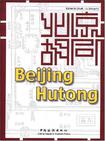北京胡同
2008-8
中国旅游出版社
刘保全 编
259
250000
无
With a long history and rich connotation, Chinese geographical names culture is crowned as national treasure.Ancient geographical names feature the rare recorded history of civilization extending for 5,000 yearscontinuously. To protect this precious cultural heritage, China Institute of Toponymy and Chinese Division ofUnited Nations Group of Experts on the Geographical Names (UNGEGN) launched the Protection Project ofChina Geographical Names Cultural Heritage. According to the guidelines and principles of the world culturalheritage protection, these relevant organizations conducted researches on China geographical names and workedout the Master Plan for Protection Project of China Geographical Names Cultural Heritage. All these are ofpractical significance to the protection of China geographical names cultural heritage and China's declaration ofthe geographical names for world intangible cultural heritage.Liu Baoquan, Chairman of the Chinese division of UNGEGN, attended the 9th United Nations Conference on theStandardization of the Geographical Names in August, 2007. He informed us that the conference had recognizedgeographical names as the intangible cultural heritage, which complies with the principle of the Convention onProtection of the Intangible Cultural Heritage. We were all happy with it.Beijing is one of the most ancient, historical and cultural capital cities in the world. Hutong names culture isan important part of the unique history and culture in Beijing. Over the past few years, great achievementshave been made in the activities of researching Beijing Hutong names and in protecting geographical namescultural heritage nationwide. All these have laid a solid foundation for China's declaration of Beijing Hutongnames intangible cultural heritage. As a member of the Chinese group of experts on protection of geographicalnames cultural heritage, and advisor of China Institute of Toponymy, I would like to do my contribution to theprotection of China geographical names cultural heritage with my colleagues.I am sure that the compilation and publishing of the book entitled Beijing Hutong are of great significancein the protection and salvage of Beijing Hutongs and the cultural heritage with artistic and scientific researchvalue. Protection of Hutong names is a way of protecting cultural heritage, serving as a great contribution tothe preservation of valuable research materials when the cultural entity can not be preserved although it can notreplace the cultural entity. The publishing of this book is bound to play an active role in the popularization ofChinese culture, scientific researches, development of local and regional culture and flourishing of tourism.
According to the guidelines and principles of the world culturalheritage protection, these relevant organizations conducted researches on China geographical names and workedout the Master Plan for Protection Project of China Geographical Names Cultural Heritage. All these are ofpractical significance to the protection of China geographical names cultural heritage and Chinas declaration ofthe geographical names for world intangible cultural heritage.
Preface
Foreword:Beijing Hutong Name Cultural Legacy protection
underway
Chapter one the Origin of Beijing Hutong
Section one Mysterious Origin of Beijin“Hutong”
The oldest books about Huton’S collection and
introduction
“衚衕”is the phonetic change of“衚衕”in the
south
“衚衕”is the dialectof“衚衕”in the south
The usage of“衚衕”
The character of“衚衕”before Ming dynasty is“衚衕”in
Chinese
The comparison of the“Huton”character in ancient
literature of Yuan dynasty and Ming dynasty:“胡洞”was found in
ancient literature of Yuan dynasty while
衚衕in Ming dynasty
The word“Huton”originated from“Hong(alley)”in
Han dynasty
In Liao and Jin periodthe character
of“Huton”(“衚衕”)is popular in the Northern China
The rapid development of Hutong in Ming dynasty
related with the pronunciation
“Hong”of alleys in Hart dynasty
Section two Naming ofBeijing
Capital naming
City gate name
City lane’s name
Section three Assortment of Hutong Names
Names after temples
Names after animals
Names after trees
Names after camps
Names after bridges
Names after wells
Names after storehouse(Cang Ku in Chinese)
Names after steles(Bei in Chinese)
Names after entities with high recognition and
symbolization
Chapter two History and Evolvement of Beijing Hutong
Section one Evolvement of Beijing City Structure in History and
Forming ofHutong
Layout of Dadu in the Yuan dynasty
Old Beijing Hutongs
Section two Huton’S Vicissitude
Variance of Hutong form
Variance of Hutong grade
Continuation and inheritance of o dd Beijing
Hutong and geographical name culture
Section three About Early Hutongs in Beijin
Threshold of Beijing geography
Thousand syear-old path in
Jiqiu
Origin ofSouth Garden
Sichuan Ying(Camp)——to commemorate a female
general
Jiaochang Toutiao t Tia—initiation place
of China’s modernism
Compatible area of various religions
Famous Dashiler
Section four Beijing Platform Bridge Geographical Name
Culture and Folk Customs
Chapter three Siheyuan in Hutong
Section one Proper Protection of“Huton—Siheyuan”In Old
City
Protection measures
Section two Hutong and Siheyuan
Component cell of
Huton—Siheyuan
Siheyuan and Chinese traditional etiquette
system
Assortment of Siheyuan
Courtyard gate of Siheyuan
Section three Beijing Siheyuan Construction Layout and
Cultural Spirit
Erlitou
Jiugongge
About main room
……
Chapter four Typical Hutong Preserved Today
Chapter five Old Stories of Hutong
Chapter six Former Residence of Celebrities In Hutongs
Chapter seven Hutong Stuff
Postscript
Remarks of the Author
Reference Material
插图:
《北京胡同(英文版)》由中国旅游出版社出版。

无
送货很快,着急送老外才买的,不知道好不好。